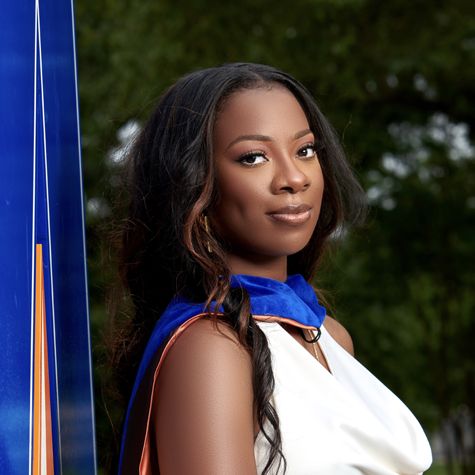Early Career Scientist Spotlight
Dr. Tre'Shunda James (she/her/hers)
Space Physicist
Geospace Physics Laboratory (673)
Did you always know that you wanted to study space physics?
I did not always know that I wanted to study space physics. In fact, I did not even know such a field existed until I had begun graduate school. As an undergraduate student, I wanted to become a chemical engineer. I figured I loved math and chemistry, and that chemical engineering would be a perfect marriage of the two. However, my liberal arts college did not offer any type of engineering as a major. To pursue this career, I would have to spend my first two years completing physics courses. Based on my performance in those classes, I would then be able to apply for the 3-2 (dual-degree) engineering program. As I approached the end of my sophomore year, I realized my GPA was not quite high enough to qualify me for the engineering program. I felt a bit defeated—I had to “settle” for being a physics major. At that time, I still had no clue of what being a physicist actually meant. At the end of my sophomore year, I began an internship at NASA Jet Propulsion Laboratory where I worked with Renyu Hu, a planetary scientist. I used a photochemical model to investigate the habitability of exoplanets based on the composition of their atmospheres. More importantly, I was immersed into a world of scientists. For the first time, I got to experience what it was like to be a scientist and what real world problems physicists, like me, could tackle. During this experience, I had the opportunity to present my research to rooms filled with scientists that did not look like me. It is no secret the lack of representation that minorities have in these spaces. However, I found some kind of power and solace in knowing that, though I was the minority, I had the attention of the majority, and that the science transcended our differences (race, gender, career levels, etc.)
After this experience, I wanted to become a planetary scientist and continue studying exoplanets. Fast forward to graduate school - as I begin my PhD at University of Texas at Arlington, I did some “shopping” around for a research advisor. Soon after, Dr. Ramon Lopez reached out to me to gauge my interest in space physics. My first thought was “well, it’s not exoplanets, but it’s close enough.” So, I joined Dr. Lopez’s space physics group and begin learning about Earth’s magnetosphere and never looked backed. Four years later, I earned my PhD in Physics and Applied Physics.
In short, I never set out to become a space physicist. I sort of just walked through an open door and took the opportunity when it presented itself.
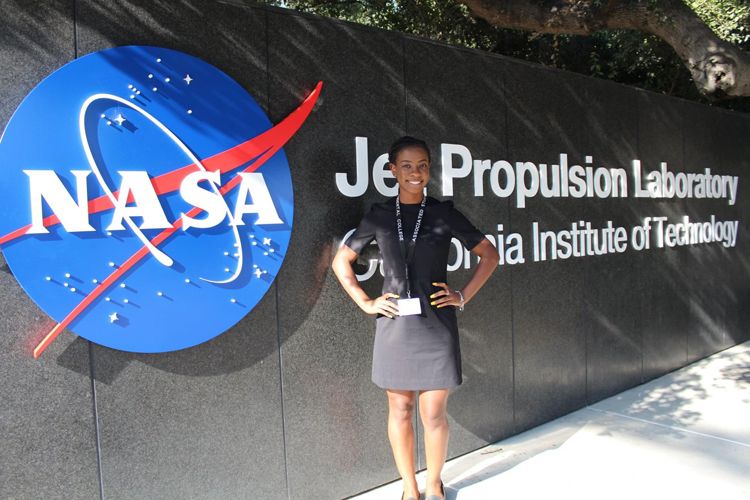
Credit: Gabriela Fessl
How did you end up working at NASA Goddard?
As a second-year graduate student, I applied for a NASA graduate fellowship to work with Dr. Alex Glocer here at NASA Goddard and was awarded that fellowship. Though it was during the COVID-19 pandemic, I was still able to visit Goddard as a part of the 10-week hybrid aspect of the fellowship. I enjoyed my short time at Goddard and wanted to experience more. So, as I neared graduation, I decided to apply for the NASA Postdoctoral Program (NPP). I figured the fellowship would be a great opportunity to expand on my graduate student work and get to know the GSFC campus and community more. I am currently in my first year of my NPP fellowship.
Tell us about the research projects you are currently working on.
Currently my research is aimed at validating Magnetosphere-Ionosphere coupling in global magnetohydrodynamic (MHD) models. Specifically, I investigate how these MHD models handle the field-aligned current, the current system resulting from the solar wind-magnetosphere interaction that functions as a coupling mechanism between the Earth’s magnetosphere and ionosphere. To do so, I use data analysis techniques to compare the model-derived magnitude of the currents for a specific event or time frame to what the observed current magnitudes were at that time. This work quantifies how well the models are replicating the observed current magnitudes.
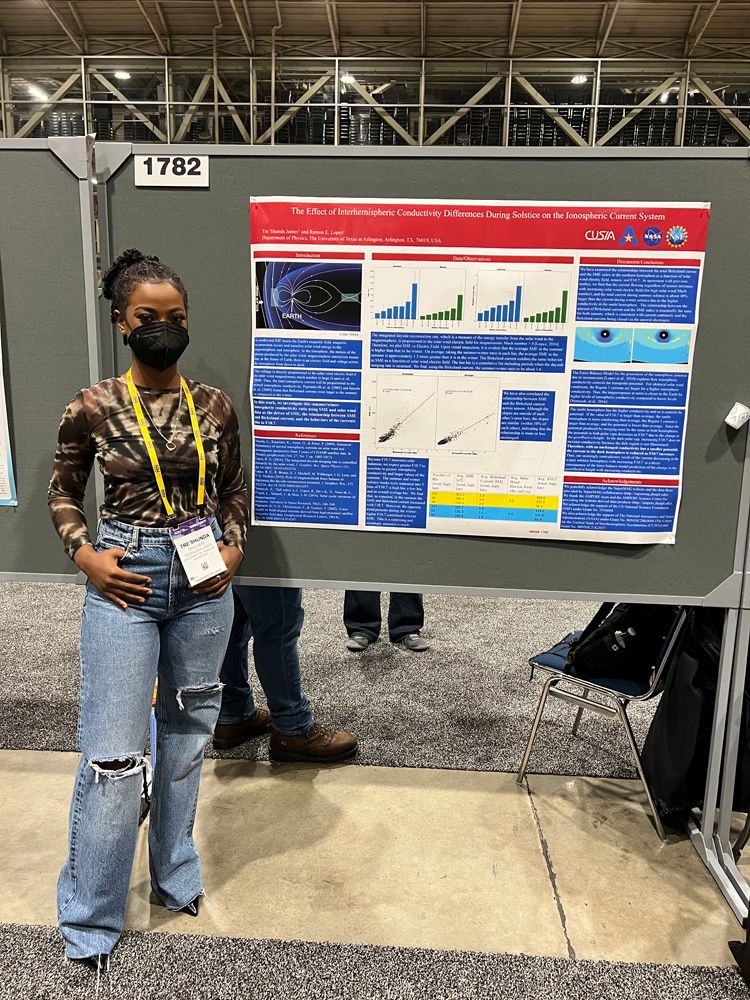
Credit: Tre'Shunda James
Tell us about a unique or interesting component of your work-life balance.
I think one of the most interesting parts of my work-life balance is that I always find time to explore the places my work takes me. There are a number of conferences relevant to my field of study that are hosted all across the world. Whenever I attend these conferences, I make sure to enjoy what the location has to offer. To do so, I often plan small excursions with other scientists. Whether experiencing a new culture through food or seeing historical sites, I always make time to explore. I think that’s one of the greatest perks about being a scientist—you get the opportunity to travel and present your work all over the world.
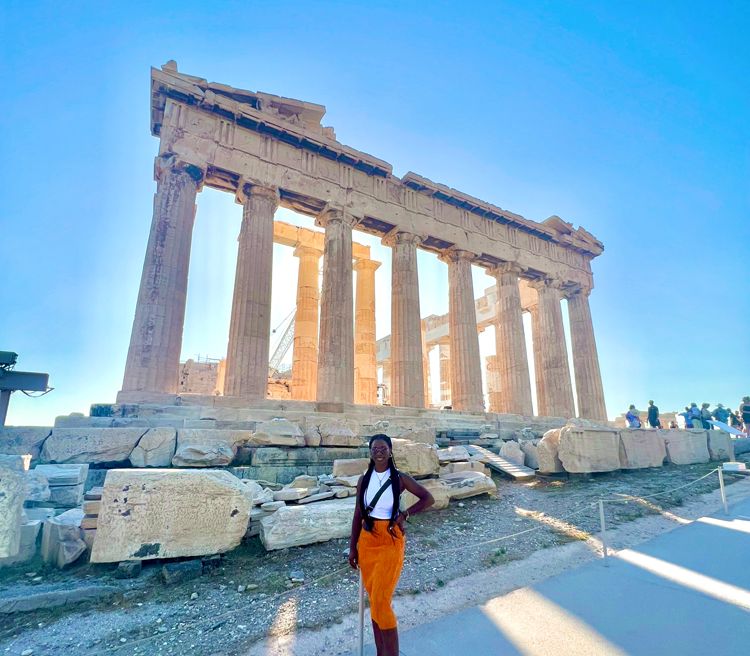
Credit: Tre'Shunda James
What are your future research interests and goals?
One of my future goals is to become a Principal Investigator (PI) on a NASA mission as interdisciplinary as my interests, which include: geospace, model validation, heliophysics, space physics, upper atmosphere and ionosphere, magnetosphere-ionosphere coupling, exoplanets, and science policy. In the future, I hope to combine the knowledge and skills I have obtained from studying Space Weather with those from studying exoplanets; for example, I could investigate the solar wind- magnetosphere coupling on exoplanets. Upon completion of my first year as a NASA Postdoctoral Program (NPP) Fellow at NASA GSFC, I plan to apply for the NASA Postdoctoral Management Program (NPMP). In addition, I plan to write proposals, publish papers, peer review journal submissions, and serve on various review panels.
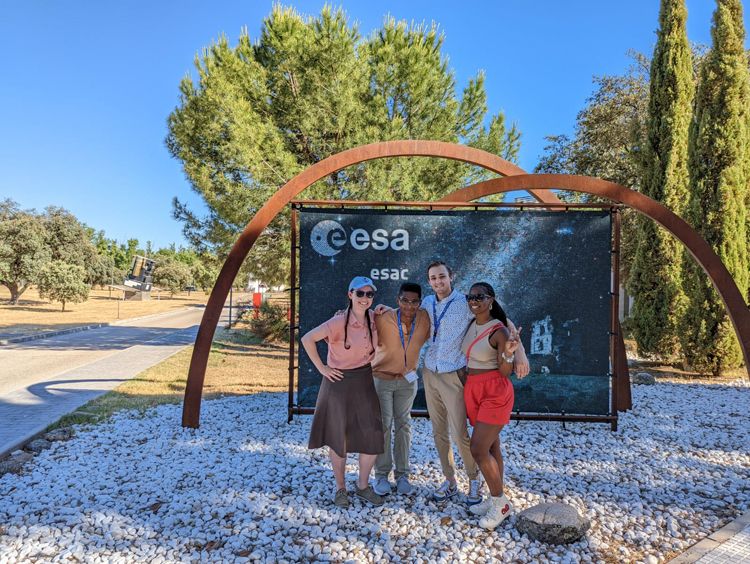
Credit: Tre'Shunda James
What do you like to do in your free time?
In my free time I like to tap into my creative side. When I am not playing my dog Tory, a 3-year-old miniature schnauzer, I am usually out exploring DC and its creative spaces. Recently, I found myself attending poetry slams (as an audience member). Other than that, I also enjoy expressing my creativity by designing planners. I have always had a knack for organization and ever since high school I have used a planner religiously. So, two years ago I though why not create my own planner. This eventually led to a small business in which I create planners to help others set and keep track of their goals. Since then, I have been exploring more design options, marketing strategies, and ways to improve the overall success of my business.
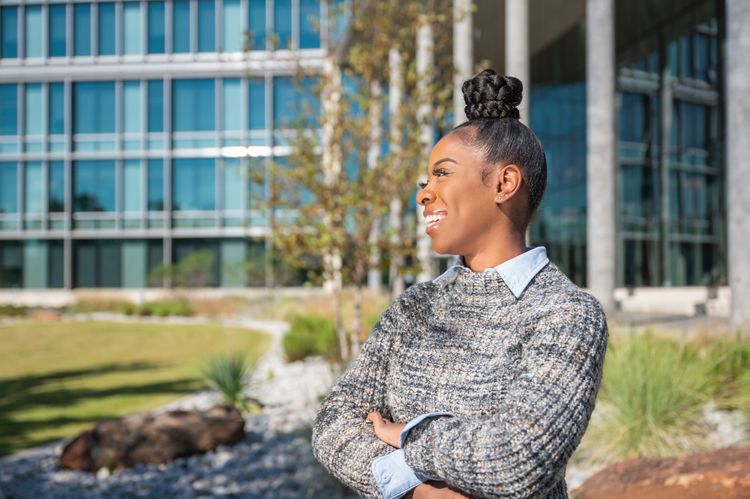
Credit: Gregory Peterson
What is a fun fact about you?
I have always been a competitor. As a child, I would even compete against myself and my classmates to earn the highest grades. In middle school, this competitive nature manifested itself outside of the classroom. I participated in soccer, basketball, volleyball, and band, and if my school had offered football, I would have definitely participated in that as well. Since then, I have remained an avid sports fan. Most times I find myself having no personal connection or “skin in the game,” but often choose to root for the underdog. In undergrad, I played collegiate volleyball. Now that I am slightly older, I do not play volleyball anymore, but I am looking for opportunities to get back involved with the sport.
Biography
Home Town:
Houston, Texas
Undergraduate Degree:
Bachelor of Arts in Physics, Occidental College, Los Angeles, California
Post-graduate Degrees:
PhD in Physics and Applied Physics, University of Texas at Arlington, Arlington, Texas
